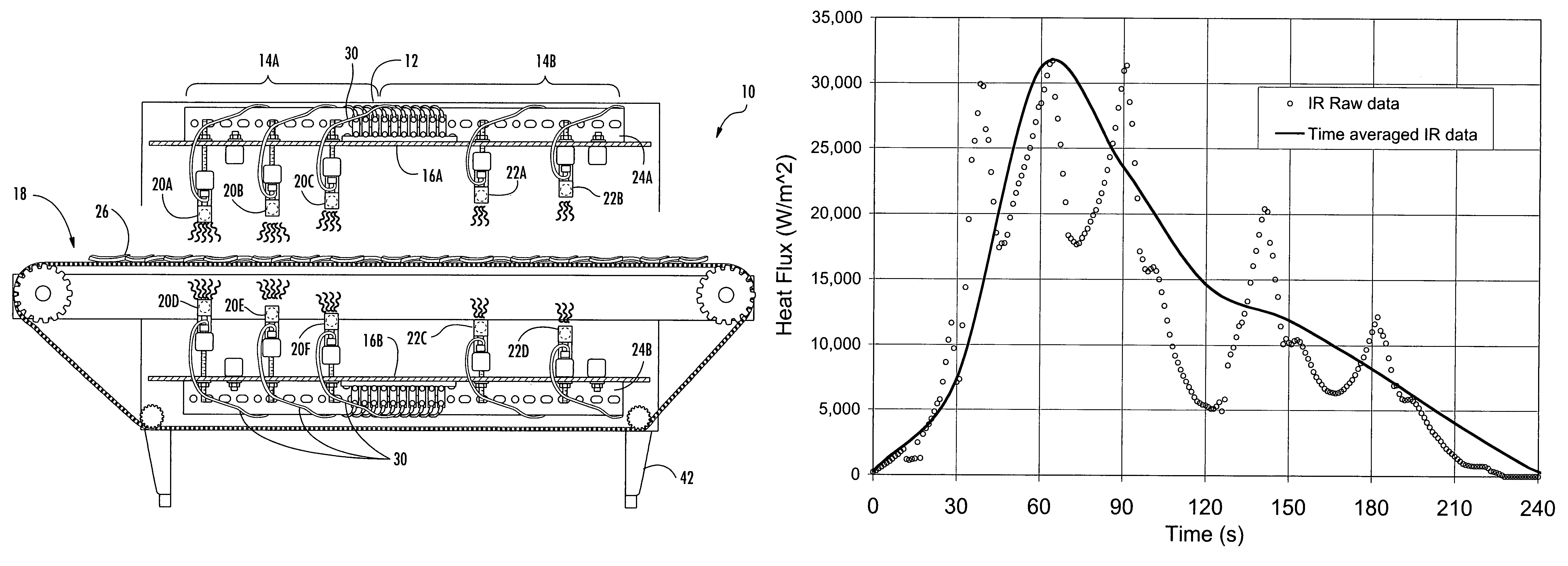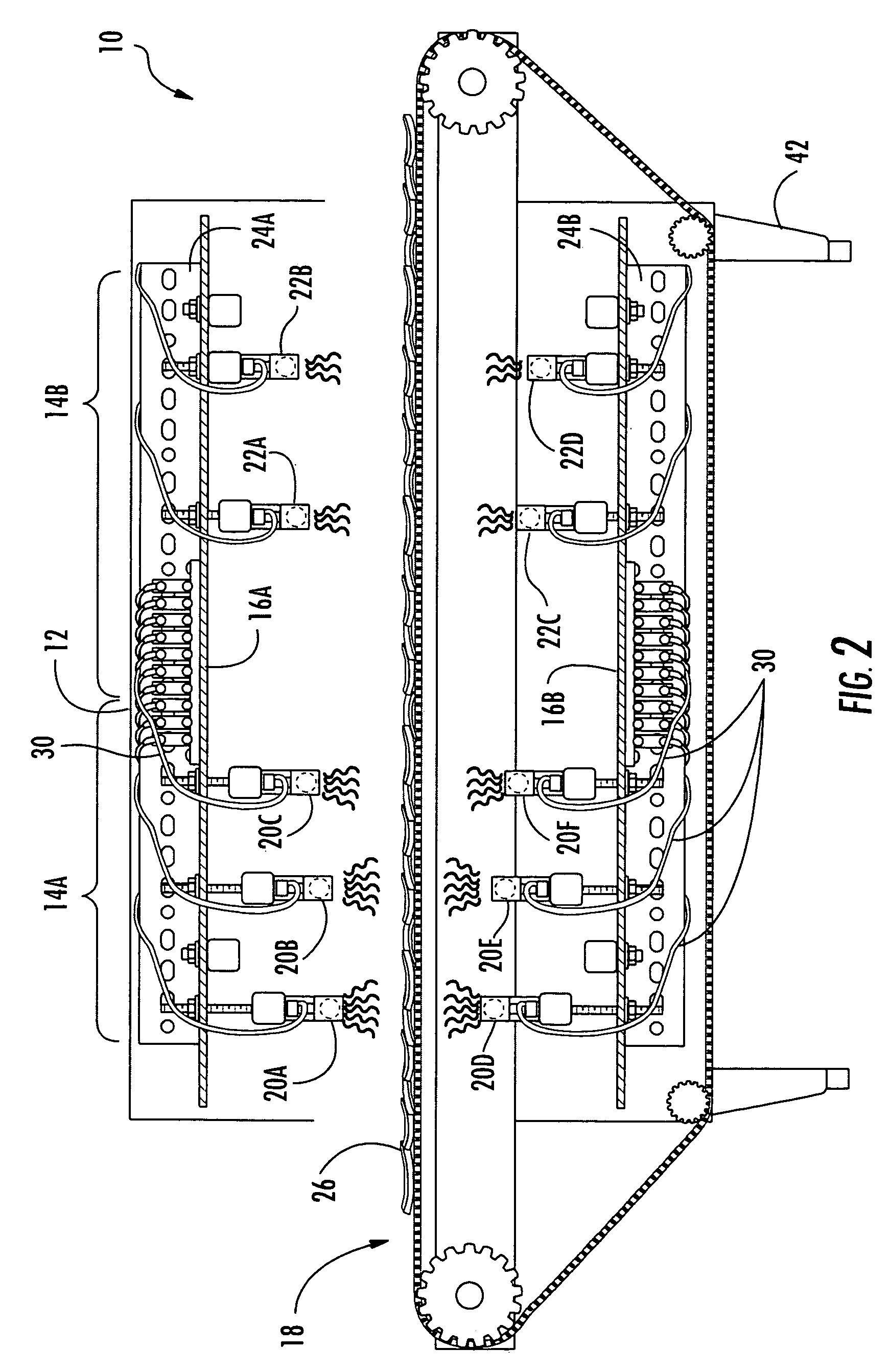Dynamic radiant food preparation methods and systems
- Summary
- Abstract
- Description
- Claims
- Application Information
AI Technical Summary
Benefits of technology
Problems solved by technology
Method used
Image
Examples
example 1
[0058]Without wishing to be bound by a particular theory, immersion frying may be characterized by four stages: 1) initial heating, 2) surface boiling, 3) falling rate, and 4) bubble end point. Radiant heat can be used to approximate the immersion frying process. Briefly, when a food product is immersed in frying oil, heat is initially transferred from the oil to the food by free convection and through the food by conduction with little water vaporization (stage 1). During stage 2 (surface boiling), moisture at the surface is suddenly lost, which increases surface heat transfer and results in crust formation. Stage 3 (falling rate) is characterized by decreased heat transfer and a steady decrease in vapor mass transfer from the food product. The bubble end point (stage 4) can be characterized by the apparent cessation of moisture loss from the food during frying. Heat transfer characteristics during immersion frying are discussed in Hubbard, L. J. and B. E. Farkas. 1999. A method fo...
example 2
[0063]Commercially available frozen par-fried potato strips are obtained for reheating with finish fried-like quality. The par-fries have a bulk moisture content of about 60 to 70%. The initial oil content of 6 to 20%. The par-fried potato, or other par-fried potato material, may be standard shoestring cut, steak-cut, crinkle cut, regular-cut, or other any size with variable oven configurations of emitter power and vertical and horizontal spacing preset for optimal heat flux for fried-like reheating based on material dimensions and initial temperature. A shoestring cut frozen par-fried potato is heated in the variable heat flux oven for approximately 3 minutes or less. The surface crust color was virtually identical to high-quality freshly immersion-fried French fries based on visual observation and instrumental measurements using a digital image analysis of lightness, luminosity, and Hunter b-value. Par-fried French fries heated using this invention were compared with traditional f...
example 3
[0069]Room temperature, high quality, unglazed, par-fried yeast-risen or cake doughnuts are used as starting material for fried-like reheating. The starting doughnuts, or other fried dough material, may be standard size, mini-, or other any size with variable oven configuration preset for optimal surface heat flux for fried-like reheating based on material dimensions and initial temperature. The unglazed doughnuts previously received a full or partial initial frying in frying oil with a starting moisture content of about approximately 20 to 30%. The initial oil content of the unglazed par-fried doughnuts is about 10 to 18%. The room temperature unglazed doughnuts may be cooled, freshly fried up to staling age (approximately 7 days) and still be used as a starting material. The standard size, room temperature doughnuts are reheated with a variable heat flux oven in approximately 30 seconds. The surface crust temperature obtaining a temperature of about 165° C. and a center temperatur...
PUM
 Login to View More
Login to View More Abstract
Description
Claims
Application Information
 Login to View More
Login to View More - R&D
- Intellectual Property
- Life Sciences
- Materials
- Tech Scout
- Unparalleled Data Quality
- Higher Quality Content
- 60% Fewer Hallucinations
Browse by: Latest US Patents, China's latest patents, Technical Efficacy Thesaurus, Application Domain, Technology Topic, Popular Technical Reports.
© 2025 PatSnap. All rights reserved.Legal|Privacy policy|Modern Slavery Act Transparency Statement|Sitemap|About US| Contact US: help@patsnap.com



